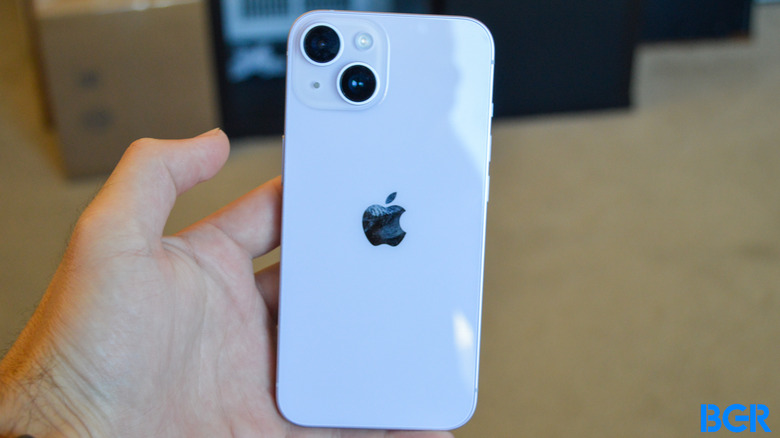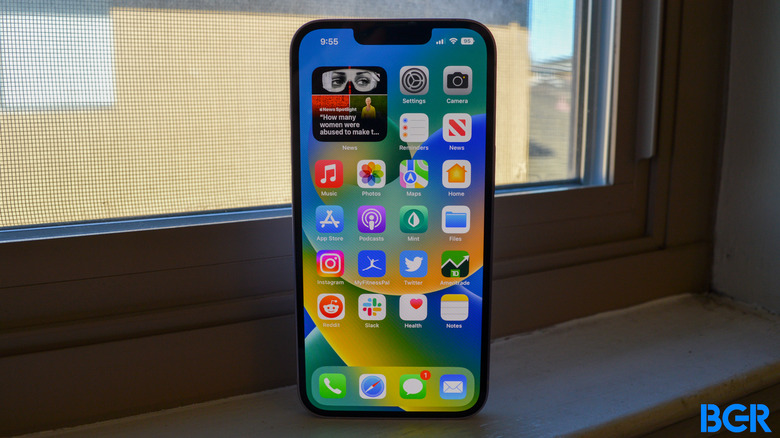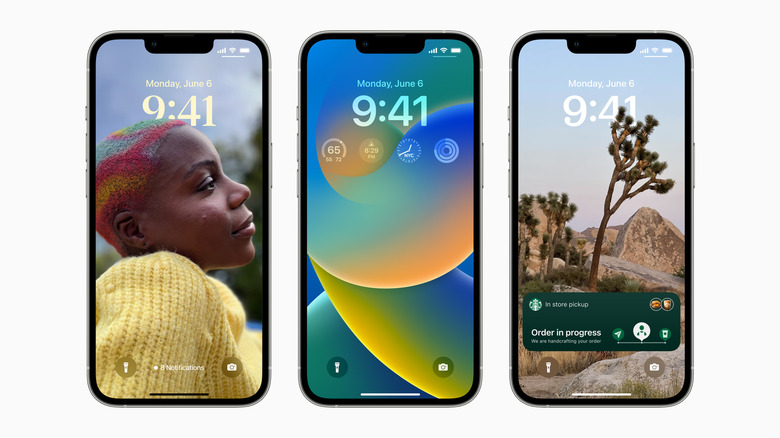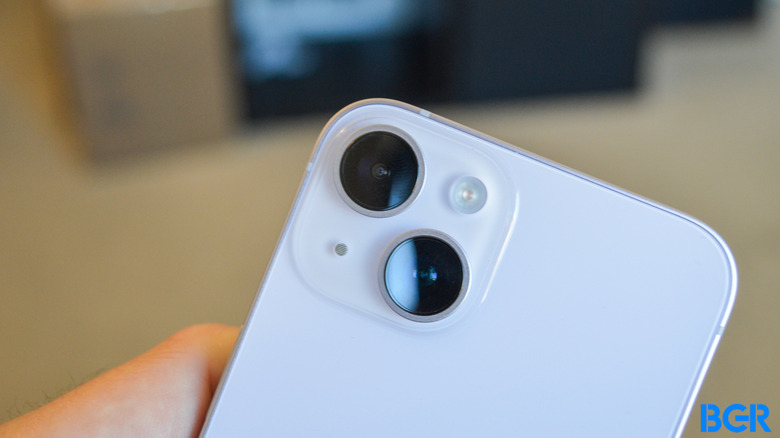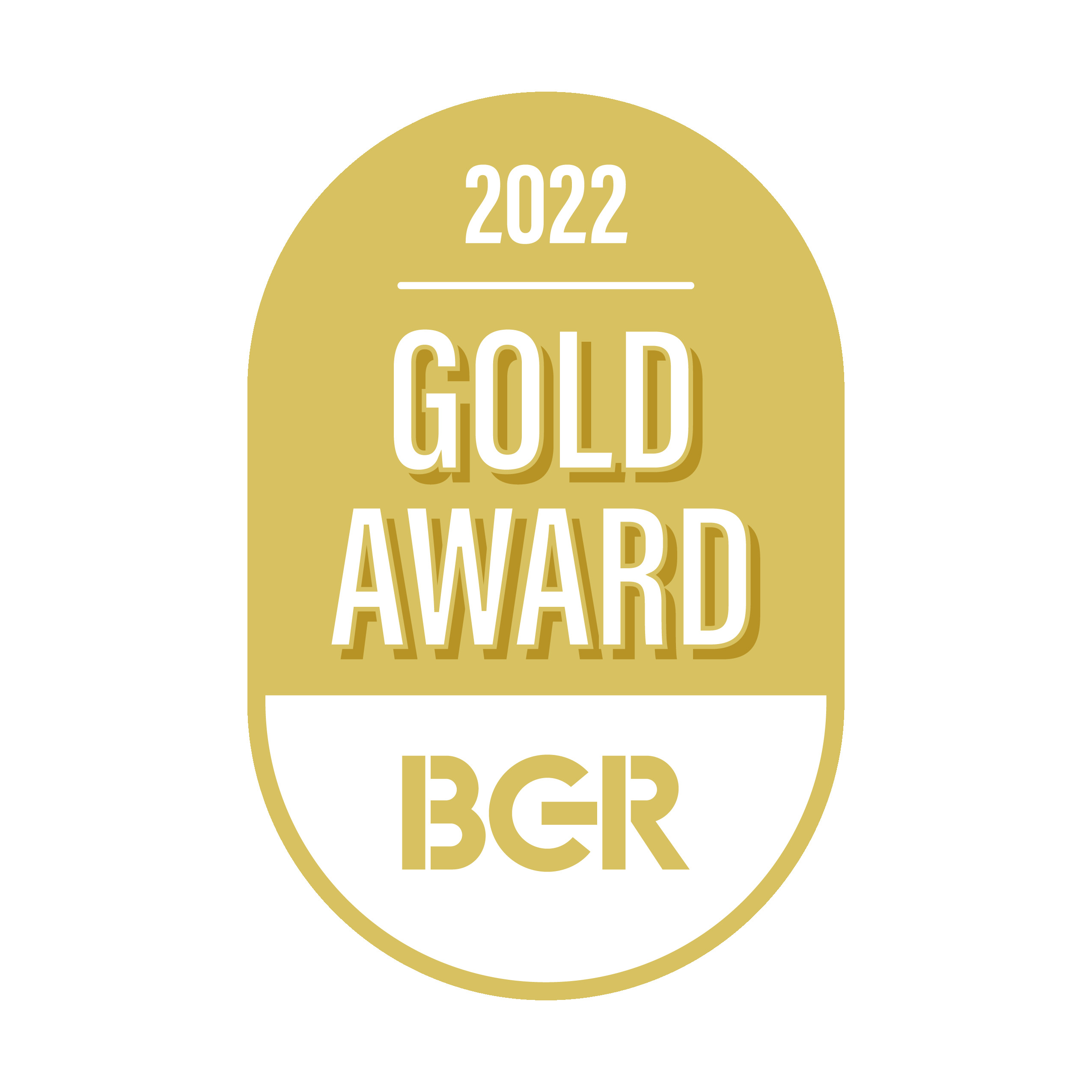Apple iPhone 14 Review: Minor Tweaks But Still A Great Phone
The iPhone 14 is a little bit of a weird release from Apple. The iPhone 14 Pro gets new features like an always-on display, a new 48-megapixel camera sensor, and the so-called Dynamic Island. The standard iPhone 14, however, gets none of that. It doesn't even get a new processor, breaking years of tradition.
That doesn't mean the iPhone 14 is a bad phone. Far from it — the device still outperforms every Android phone, has a top-tier camera system, and is now available in a bigger "Plus" size (but sadly not a Mini size). It's just that it's so similar to the iPhone 13 before it, that you'll have to think long and hard about whether the iPhone 14 is worth buying over a much cheaper refurbished or used iPhone 13.
Now, of course, the Plus option will be reason enough for many to upgrade to an iPhone 14 model. If you're a big-screen person, then it will likely be a great option — and for some, even a good option over the iPhone 13 you might already have. But what about everyone else?
Apple iPhone 14

The iPhone 14 isn't much of an upgrade over the iPhone 13, but it's still a great device and an upgrade for anyone coming from the iPhone 11 or older.
- Great camera
- Good battery
- Emergency features are cool
- Still excellent performance
- Display could use some upgrades
iPhone 14 design
The similarities to the iPhone 13 start with the design. The standard iPhone 14's design is almost exactly the same as the iPhone 13. That's not necessarily a bad thing — I like the flat-edged look that debuted in the iPhone 12 series.
On the back, you'll still get the same diagonally-aligned dual camera setup, with a lone Apple logo in the center. On the right, you'll still get the power button. On the bottom, you'll still get the Lightning port. And, on the left, you'll still get the volume rocker. If you buy your device in the U.S., there is one difference to see on the left side though — a lack of a SIM card slot. In the U.S., the iPhone 14 is eSIM-only. Your carrier should be able to help you move to an eSIM if the basic setup process on your device doesn't work.
The front is the same too — unfortunately, the iPhone 14 keeps the long-used notch, unlike the iPhone 14 Pro and Pro Max, which have been upgraded to the Dynamic Island. We'll likely see the standard iPhones move to the Dynamic Island cutout at some point, but I would have liked to see it this year.
Perhaps the only big difference in design comes down to colors. The iPhone 14 is available in Blue, Purple, Midnight, Starlight, and (Product)RED. We're reviewing the Purple model, and while it does have a light Purple hue, I would have liked a deeper purple.
Despite the fact that the iPhone 14 looks the same as the iPhone 13, it's a good-looking phone, and it feels premium in the hand. That said, hopefully, we'll see some movement in design over the next year or two.
iPhone 14 display
The iPhone 14 comes with a 6.1-inch OLED display with a resolution of 1170 x 2532. That's the same as on the iPhone 13. Again, that's not necessarily a bad thing. The display looks pretty good — it's crisp, colorful, and offers deep blacks.
As you might note, it still has the notch. Now, I don't have a huge issue with the notch. I'm in favor of Apple shrinking it, but I got used to it over the years and don't mind it anymore.
One thing I did want was support for ProMotion. Unfortunately, that's still limited to the Pro devices. I hope Apple brings it down to the standard iPhone model next year. Also, unlike the Pro, you won't get an always-on display — you'll have to turn it on yourself, thank you very much.
iPhone 14 performance
Unlike the iPhone 14 Pro and Pro Max, the standard iPhone 14 sticks with the Apple A15 chipset. This breaks years of tradition for Apple, which has always given all models the chipset upgrade.
Now, to be clear, the A15 is an excellent chipset and more than good enough for the vast majority of use cases right now. But the fact that it still has last year's chip also means that it won't perform as well, for as long, as the iPhone 14 Pro and Pro Max. It also could mean that Apple will cut it off from software updates a year earlier than the Pro models.
It's still possible that Apple will bring as many upgrades to the standard iPhone 14. The A15 in the iPhone 14 has one more GPU core than the A15 in the iPhone 13 — though it's hard to imagine that will make a huge difference.
In day-to-day use, the iPhone 14 performs excellently. It was able to handle everything I could throw at it, including some mobile gaming, heavy multitasking, and more. Safe to say, it can easily handle everything you'll need for now, and for at least a few years to come.
Under the hood, the iPhone 14 offers a few other sensors and features. Notably, the device has the new Crash Detection feature that uses new accelerometer and gyroscope sensors to sense if you've likely been in a car accident and alert the authorities unless you intervene. It's a neat feature, but, for obvious reasons, I couldn't test it. Also, the phone has a new Emergency SOS via Satellite feature that will be enabled starting in November and allow you to contact emergency services through satellite connectivity in the U.S. and Canada. As it's not available yet, I was also unable to test this feature.
iPhone 14 battery and charging
According to Apple, the battery in the iPhone 14 is slightly better compared to the iPhone 13 — but don't expect huge changes. Apple says the device will get up to 20 hours of video playback on the iPhone 14, which beats the 19 hours from the iPhone 13.
Those are pretty controlled situations though — but in the real world, thankfully, I can report that the iPhone 14 does indeed offer a solid battery life. It will easily get through a full day of even heavier use, and I usually ended the day with around 50% left, if not a little more. That's plenty of room to breathe.
The device can charge at up to 20W with a wired connection, MagSafe charging at up to 15W, and Qi charging at up to 7.5W. With a cable, you should be able to get to 50% battery in around 30 minutes, which is fine but not incredible. I hope Apple works harder on improving charging speeds in future years.
iPhone 14 camera
The iPhone 14 offers a similar camera system to the iPhone 13. It's not exactly the same and should take slightly better images, but you won't get radically improved images on the iPhone 14 compared to the iPhone 13.
The iPhone 14 comes with a dual camera system with one 12-megapixel main camera with an f/1.5 aperture, and one 12-megapixel ultrawide camera with an f/2.4 aperture. The device has a larger sensor, and that should make for increased depth, and better light capture.
The camera also gets Apple's new "Photonic Engine" image processing tech, which Apple says will help make for better low-light performance compared to the iPhone 13. Indeed, low-light images captured on the iPhone 14 did look solid, with better detail than the iPhone 13.
On the front there are some upgrades too. The iPhone 14 gets a new autofocus feature on the selfie camera, along with a wider aperture. Combined these make for better selfies overall, especially when it comes to sharpness and detail.
iPhone 14 software
The iPhone 14 comes with iOS 16, which is Apple's latest and greatest iteration of its iPhone software. Unlike the iPhone 14 Pro, you won't get the new Dynamic Island — so the software is basically exactly the same as on the iPhone 13.
iOS 16 comes with a range of improvements that are genuinely helpful. This isn't an iOS 16 review but I really like the fact that you can now customize the Lock Screen, adding widgets that provide glanceable information, like the weather and your activity. I also appreciate smaller tweaks, like the ability to edit and unsend messages in iMessage, and the addition of My Sports to the News app.
Conclusions
The iPhone 14 is a great phone — but it's definitely not worth an upgrade if you have an iPhone 13. I wish Apple kept up with adding the latest processor, but I still appreciate the camera upgrades and the fact that the device has some great new emergency features — and the phone still beats much of the competition in its price range
The competition
The biggest competition for potential iPhone buyers comes from other iPhones. If you have an iPhone 13, you should probably wait another year. In fact, even if you have an iPhone 12, you may not be getting very big upgrades. Coming from an iPhone 11 or older, however, you'll get substantial improvements that will make the upgrade worth it.
If you're debating between the iPhone 14 and the iPhone 14 Pro, and can afford the Pro model, it's definitely worth spending more. The iPhone 14 Pro boasts much better camera improvements, the Dynamic Island, and a processor upgrade.
Should I buy the iPhone 14?
Yes, but only if you're upgrading from an iPhone 12 or older.
